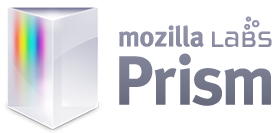The last entry about Flow got me thinking about a very common skill that’s brought up in the information professions: multitasking. I think it’s becoming a lot more prevalent in most fields nowadays. As an admittedly horrible multitasker, I feel a bit skeptical about making it such a high priority and an expectation for people in the workplace.
I think when it comes to working on computers especially, our state of flow depends a lot on how we divide our attention -or, allow our attention to be divided. Multitasking is considered to be an essential skill in our profession, but I wonder whether people think critically about what multitasking really is, or should be.
Kevin Kelly blogs about the way technology changes society and causes us to adopt new kinds of behaviour. I think the trend towards multitasking is a clear example. Computers are capable of multitasking in ways that people are not, and vice versa. It can be very stressful to try and keep up with more than one task our computers are working on (keep an eye on your taskbar at work. Are the items so squished together you can’t see what they are?).
In Rick’s web design glass we talked about establishing goals, tasks and actions for use of websites. Goals -such as publishing a blog entry- require us to do more than task to complete them. There’s navigating the website, then writing, then proofreading, etc. Achieving goals requires us to manage tasks carefully, as some need to be done before others, while some can be done at any time, etc.
Research on Flow has shown that people who are able to focus their attention on single goals, and eliminate or manage distractions for prolonged amounts of time, tend to be successful at their jobs. Dealing with one goal allows us to manage tasks effectively, and become efficient to the point where we can multitask. Trying to achieve two or three goals at a time will cause tasks to jumble together into a big mess. At least, that’s how I often feel!
I think it’s easier to see these limitations with physical work (imagine a farmer trying to milk two cows at once, or a construction worker going back and forth between nailing boards and painting a wall), but the boundaries are less clear when we work on computers which can host multiple tasks and cause all sorts of interruptions.
This may affect people more than they realize while they work, read and learn. There’s a lot of hype about how the web is “changing the way we read.” Well, I argue that it isn’t, and instead has just introduced new ways to read. What is happening I think is that people are practising the skill of focused, sustained reading less.
I think keeping goals in mind and keeping them separate is an important lesson, especially with social media, where learning and communication are the goals. They are both delicate and require a lot of attention and dedication, but the reward, of course, is great.
